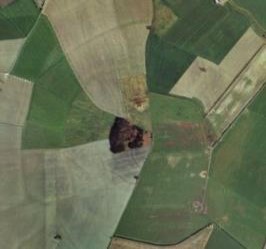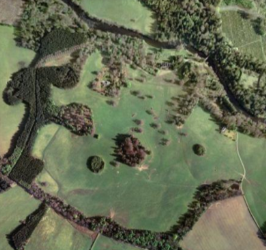The history of WrEN
WrEN started in 2013 in Scotland, UK, expanding to a second study area in central England the following year. In both study areas we selected a replicated chronology of woodland creation sites, and their surrounding landscape, to represent distinct elements of ecological networks (see below).
These elements consist of both site-level and landscape-level attributes encompassing the bigger, better, more and joined principles put forward in the Making Space for Nature report (Lawton et al., 2010). The bigger and better principles are covered by considering area, shape and quality of new woodland habitat (site-level attributes). The more and joined principles are addressed by assessing the area of surrounding woodland habitat, distance between new and existing woodlands, and types land cover in the surrounding landscape.
The images below illustrate woodland fragments for which the surrounding landscape varies from having no nearby woodland (a), being embedded within a matrix connected by small patches of trees (b) to well connected to treelines, hedgerows and other woodland patches (c)
These elements consist of both site-level and landscape-level attributes encompassing the bigger, better, more and joined principles put forward in the Making Space for Nature report (Lawton et al., 2010). The bigger and better principles are covered by considering area, shape and quality of new woodland habitat (site-level attributes). The more and joined principles are addressed by assessing the area of surrounding woodland habitat, distance between new and existing woodlands, and types land cover in the surrounding landscape.
The images below illustrate woodland fragments for which the surrounding landscape varies from having no nearby woodland (a), being embedded within a matrix connected by small patches of trees (b) to well connected to treelines, hedgerows and other woodland patches (c)
The site selection procedure used in WrEN enables us to look at the effect of one network variable (say patch size), while varying others (e.g. degree of isolation). Click here for more information on the study design.



